curated by Claudia Praolini
Ubik is an out-of-competition part of the festival, where the works with the most innovative language find their natural spot. Whereas the aim of short films experimenting new ways of expression has always been one of the core criterion for selecting and evaluating all the films competing at Concorto, the Ubik ones push the limit a bit further, in less-charted territories, where the border between cinema and video fades away. It is a kind of cinema which talks about itself, a cinema which turns its eye towards itself, revealing with no shame the mechanisms upon which video-recording is based. A kind of cinema which, conscious of its structures and language, decides to “unveil the trick”, but exactly thanks to this process, turns the viewing into opaque, as if meta-cinema were a lens which works the other way around, capable of blurring the layers of which reality is made and the experience of viewing itself.
The selected shorts
curated by Claudia Praolini
A L’entrée De La Nuit (At The Entrance Of The Night), Anton Bialas, France, 2020
All The Fires The Fire, Efthimis Kosemund Sanidis, Greece, 2019
Cultes, (La)Horde – Marine Bruttii, Jonathan Debrouwerarthur Harel, France, 2019
Electric Swan, Konstantina Kotzamani, France / Greece / Argentina, 2019
Freeze Frame, Soetkin Verstegen, Belgium / Germany, 2019
How To Disappear, Robin Klengel, Leonhard Müllner, Michael Stumpf, Austria, 2020
Mot Khu Đat Tot (Blessed Land), Pham Ngoc Lân, Vietnam, 2019
Reviews by Vanessa Mangiavacca
A L’entrée De La Nuit
Divided into three parts, the stories told by French director Anton Bialas (Berlinale 2020) create a triptych floating between reality and an intangible sensory dimension. The short begins and ends with the same name, the one of Massimento, alternating darkness, brief glimpses of light, and static negative images. Accompanied by a not too invisible thread connecting North Africa and the south of Europe we follow, metaphorically or not, the migratory route of those seeking a better future. Darkness and dream: that mystical dimension where our hopes and free associations take shape, led by an irrational yet pleasant hand. In the heart of the night, distances disappear and every union becomes possible, until the next day dawns. À l’entrée de la nuit is a poetic response to the catastrophes happening in our seas, a delicate idyll for all lost souls. Requiem for a dream, requiem for Massimento.
All the fires the fire
All the fires the fire (Locarno ’19) tells the story of two brothers who, during hunting season, spend their days in the mountains with their sons. Two herds, the canine one and the hunters one alternate in front of the Greek director’s camera: the rude and masculine daily life is carefully depicted in a melancholic and suffocating banality until something happens. Efthimis Kosemund Sanidis succeeded in creating a subtle narrative within which truth and appearance are blurred: the short begins with an apocalyptic vision inspired by the Book of miracles, urging the viewer to seek a “superior” epilogue in the story. And the alleged cosmic punishment for the customs of that patriarchal society can indeed be explained referring to one of the oldest stories ever adapted, that of Cain and Abel. After having nurtured birds for a whole year solely to feed on them, nothing emerges but deep compassion: in this way, a vicious circle of gratuitous greedy violence, whose final victim is the human being himself, is initiated.
Cultes
The Dance Video genre proves from its very beginning to be successful in exploring and raising questions about the role of the individual and his behavior inside the society, a confused crowd of bodies in perpetual movement. In this very case, the collective (LA) HORDE questions the role of the music festival and the symbolic evolution it has experienced from the 1960s to the present day. Mixing different formats, the short was filmed during a real festival, where five dancers happen to be puppeteers and choreographers of the unaware dancing crowd. Woodstock was born as a symbol of the peaceful youth revolt against capitalism, as a spontaneous occasion to freely associate and share: the images, skillfully shown by the Collective, reveal the present-day face of the festival, which has become a ritual dedicated to uncontrolled consumption and the cult of goods. After all, the hippie message was lost in 1971, when Coca Cola used it to create one of its most famous advertisements, and the final song of the short, the same one used for that campaign, is there to remind us of this. The human being, the final product, closely observed in his consumeristic temple, in his illusion of freedom and spontaneity, is portrayed in his brute form. But, nevertheless, that gathering of bodies is still permeated by a sort of sacred dimension, suspended between ecstasy and dismay.
Electric Swan
And the higher you live, the more you tremble.
Kostantina Kotzamani is a far prominent director on the international short film scene: previously a Concorto jury member in 2016, her name comes back with her last film, which premiered at the Venice Film Festival (2019). Electric Swan offers a portrait of a building in Buenos Aires, its residents, and the city itself: through the building’s nine floors and its trembling walls, a precise allegory of the social pyramid and of the gaps between classes permeating the capital is given. Gently suspended between a concrete and a fairy-like dimension, the Argentinian reality seen through the eyes of Greek cinema creates a magical, suspended, almost visionary harmony, within which Kotzamani invites the viewer to believe: a surreal act of faith, not only directed to her, but also to her characters. An architectural masterpiece comes to life, a human fresco where wealth, poverty, magic, stars, old age, adolescence, assumptions, death, life, beauty, sadness, desolation, and restlessness are to be found: through the cracks on the walls, the building absorbs each and every of these elements and human feelings, giving them back in unstable geometries and unexpected metamorphoses.
Freeze Frame
The freeze-frame shot is the technique with which a moving image gets stopped, frozen and it is the ice the main character of this short film made in stop motion, an unconventional homage to the scientific cinema of the origins and to the very concept of discovery, cinematographic and not. It is extravagant and original the idea to choose as subject the very technique that undoes the invention of cinema itself: in the opposite direction to Etienne Jules Marey’s experiments with chronophotography (a sequence of several photographs to create movement, starting from the flight of birds), the images of the young Soetkin Verstegen rather evoke Jean Painlevé’s avant-garde works on underwater fauna. Light, movement, matter, nature: the director seems to have fun playing with these elements, “fossilizing” small reptiles in those fake fragments of amber and celluloid. White transparent frogs jump on black backgrounds as elegant X-rays. Each ice cube is a sort of fragile little film archive in danger that needs to be preserved. Carefully taken part in all its aspects, many are the connections that this experimental work can bring to life in just five minutes.
How to disappear
Born in 2018, Total Refuse is a collective whose works are born and shaped through the Situationist method of détournement (as they define it): they adapt the aesthetics and logic of the world of video games, a means of expression that they themselves criticized, to explore its underlying structures and its dubious playfulness value. What How to disappear really aims to question is how video games represent war, taking the famous wargame Battlefield as a reference. Total Refuse offers a cutting political analysis of the role of war games (war understood as for its own sake), focusing on their anti-social reach and on the vicious spectacle in which the player wants to take part. The work covers chronologically the role of the deserter, whose figure the videogame does not conceive, despite having always existed in every great historical battle. Showing the most insane sides of the wargame and criticizing its colossal capitalist industry (in 2019 the video game market reached more than 120 billion dollars), this far-sighted work urges to rethink the player’s role: what if the winner was the one able to resist the imposed violent and apathetic logic, finding a way to establish peace?
Blessed Land
Timeless and placeless: Blessed land seems to revolve around these two non-dimensions, despite being set (actually) on Saint Andrews Day in a Vietnamese cemetery, largely dismantled to make room for a golf course. The visual and symbolic contrast of these two spaces mirrors two socially distant realities, becoming a metaphor for the economic inequality that separates the Vietnamese population, something which is often portrayed by Asian cinema. Two pairs of characters meet thanks to Zoom Games and fast car moves, through which the details of nature are closely observed and exaggerated: the amplified whistling of the wind, the black and white tones, the sepia shades only contribute to intensifying the contemplative dimension of that “blessed land”. Lan Pham Ngoc shows us how progress and loss are indissolubly linked, creating an ode to the only eternal place able to somehow resist, cherishing people, places, missing or erased moments: memory.


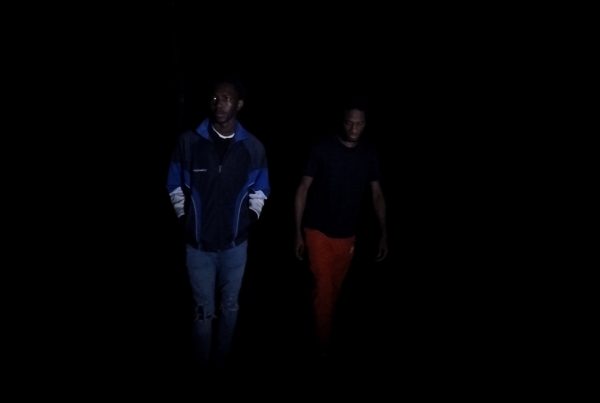
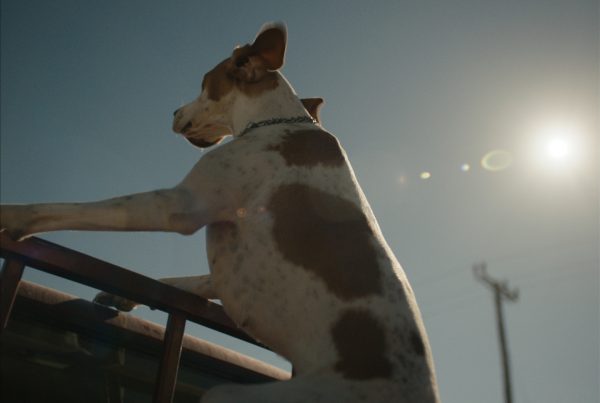


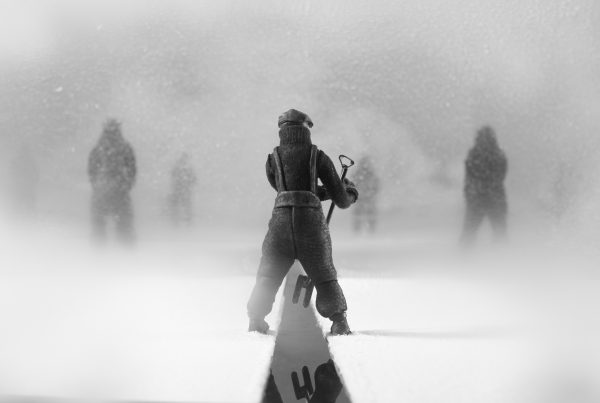


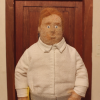
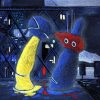




Commenti recenti